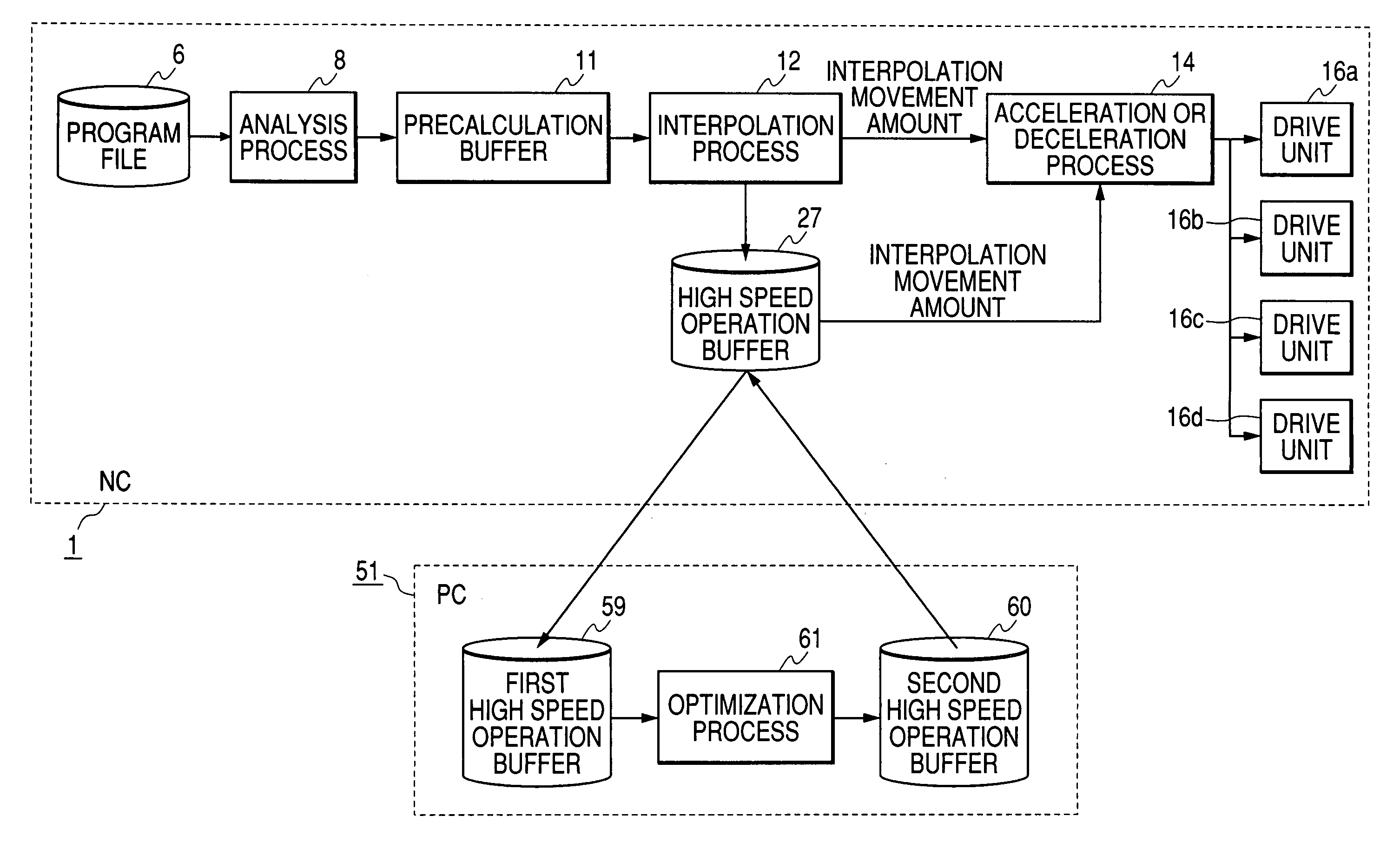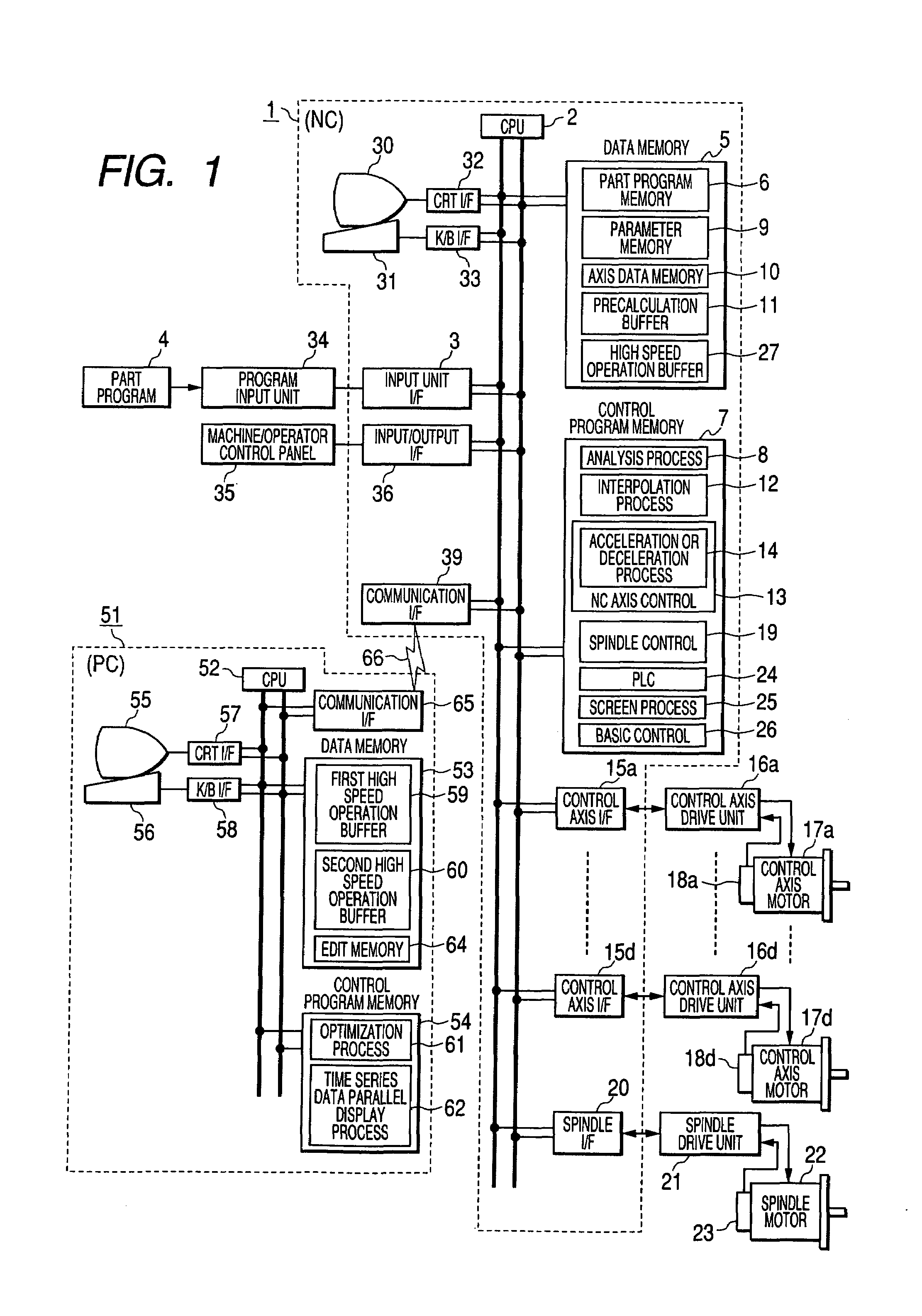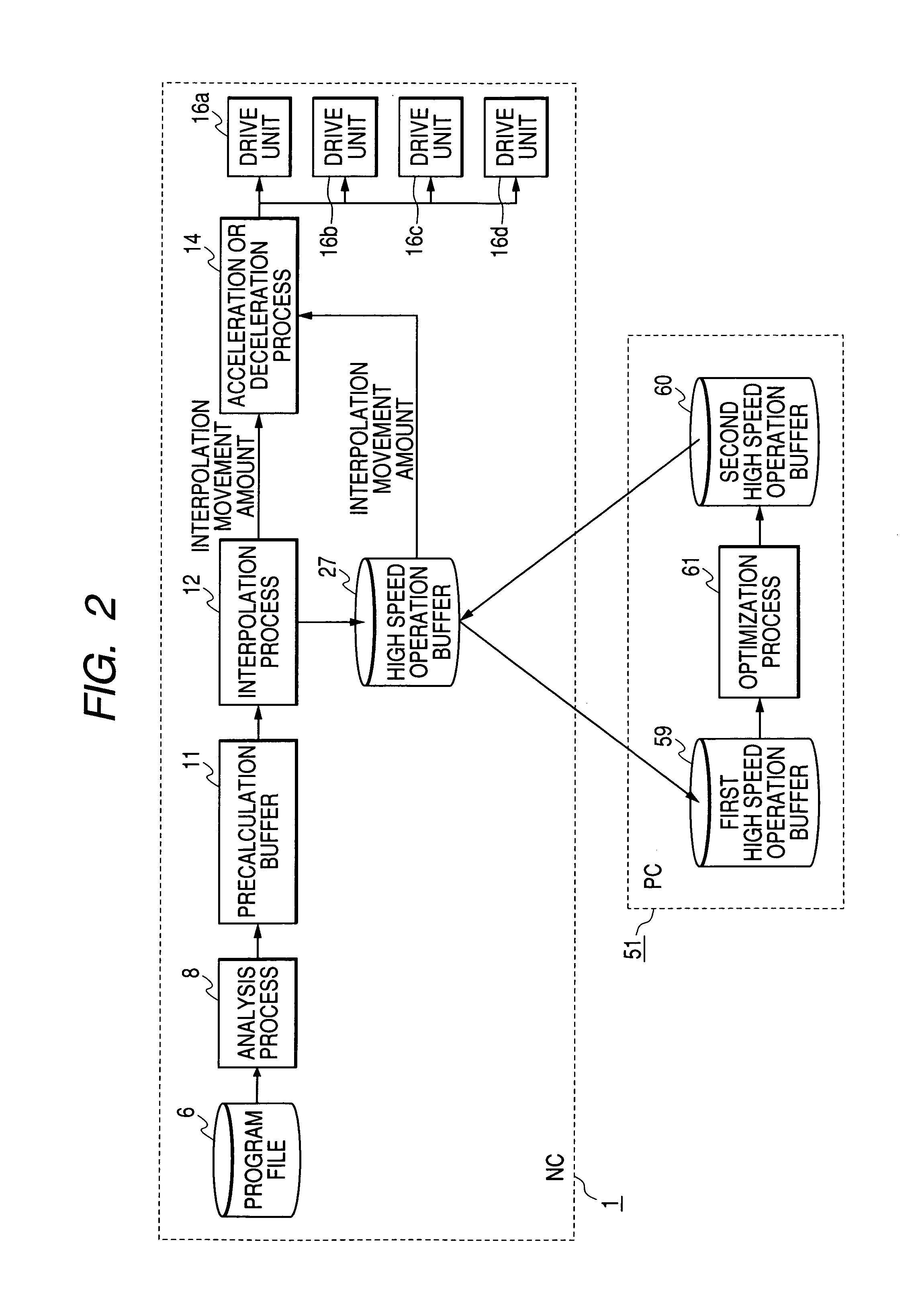Numeric control method and numeric control system
a control method and numerical control technology, applied in the field of numerical control, can solve problems such as the inability to check the dead time presence or timing check between systems, the cycle time may be longer, and the suspension of program execution
- Summary
- Abstract
- Description
- Claims
- Application Information
AI Technical Summary
Benefits of technology
Problems solved by technology
Method used
Image
Examples
embodiment 1 (
Description for Overall Configuration and Automatic Deletion of Dead Time)
[0054]Referring to FIGS. 1 to 7, an embodiment 1 of the present invention that is applied to a dual system lathe will be described below.
[0055]FIG. 1 is a block diagram showing the configuration of an NC system according to the embodiments 1 to 3 of the invention. FIGS. 2 and 3 are block diagrams showing the data flow of the essence of FIG. 1.
[0056]In FIGS. 1 to 3, reference numeral 1 denotes an NC apparatus, 2 denotes a CPU, 3 denotes an input unit I / F, 4 denotes a part program, and 5 denotes a data memory having a part program memory 6, a precalculation buffer 11, a parameter memory 9, an axial data memory 10 and a high speed operation buffer 27. Reference numeral 7 denotes a control program memory storing an analysis processing part 8, an interpolation processing part 12, an acceleration or deceleration processing part 14, an NC axis controlling part 13, a spindle controlling part 19, a PLC (Programmable Lo...
embodiment 2 (
Non-Interpolation Axis Shift)
[0102]Referring to FIG. 1, FIGS. 3 and 4, and FIGS. 8 to 10, an embodiment 2 of the invention will be described below.
[0103]FIGS. 8A and 8B are timing charts where the movement timing of non-interpolation axis (A axis) movement is adjusted with respect to the interpolation movement axis (X axis) of system 1. FIG. 8A shows the results of making an actual machine check for the part program, and FIG. 8B shows an example in which the end point of the non-interpolation axis of system 2 is matched with the “reference point “a”” of interpolation movement axis (X axis) of system 1 by making a shift process for changing the position of partial data in the optimization processing part 61 of the PC 51, for example, as shown in FIG. 9. The speed pattern as shown in FIG. 8A is displayed on the screen of the CRT 55, based on the data within the first high speed buffer 59. Also, the speed pattern as shown in FIG. 8B is displayed on the screen of the CRT 55, based on th...
embodiment 3
(Acceleration or Deceleration Pattern Change for Non-Interpolation Axis)
[0119]Referring to FIG. 1, FIGS. 3 and 4, and FIGS. 11 to 14, an embodiment 3 of the invention will be described below.
[0120]FIGS. 11A and 11B are timing charts for effectuating the interpolation axis of the first system and the non-interpolation axis of the second system at the same time, in which the operation form of the latter is changed in arbitrary manner. FIG. 11A shows the speed pattern of the operation upon a part program command before change. Since the execution of the non-interpolation axis (second system axis) may be completed during interpolation operation of the first system axis, as shown in FIG. 11B, the acceleration or deceleration time constant, the maximum speed and the acceleration or deceleration pattern can be changed by the optimization processing part 61 of the PC 51 under the condition where the movement amount of the second system axis is unchanged.
[0121]Referring to FIGS. 12 to 14, th...
PUM
 Login to View More
Login to View More Abstract
Description
Claims
Application Information
 Login to View More
Login to View More - R&D
- Intellectual Property
- Life Sciences
- Materials
- Tech Scout
- Unparalleled Data Quality
- Higher Quality Content
- 60% Fewer Hallucinations
Browse by: Latest US Patents, China's latest patents, Technical Efficacy Thesaurus, Application Domain, Technology Topic, Popular Technical Reports.
© 2025 PatSnap. All rights reserved.Legal|Privacy policy|Modern Slavery Act Transparency Statement|Sitemap|About US| Contact US: help@patsnap.com



